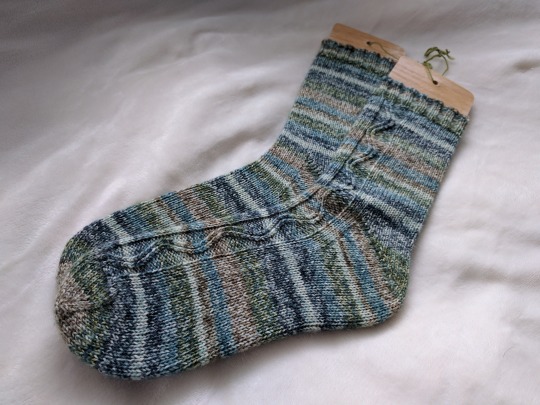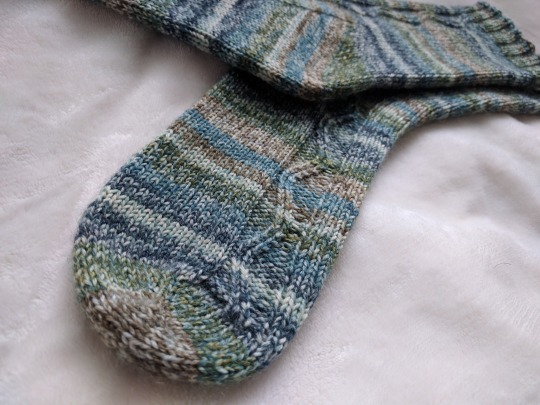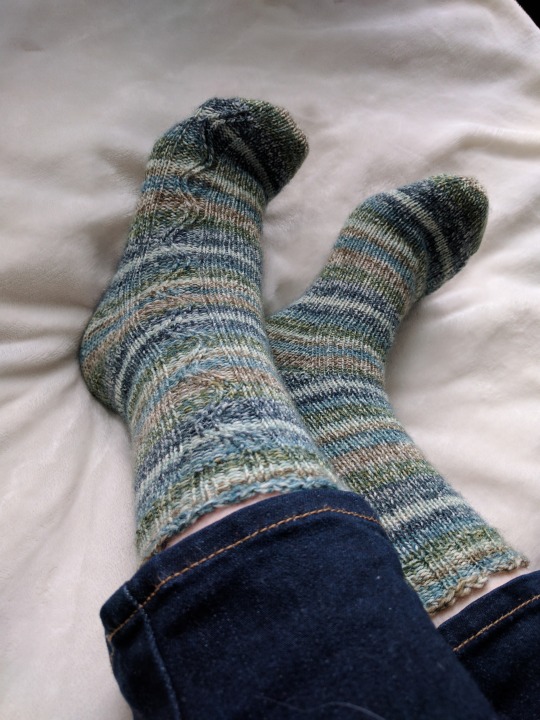#neuroscience
We are so excited to unveil the latest season of Breakthrough, a short film anthology from Science Friday and Howard Hughes Medical Institute (HHMI) that follows women working at the forefront of their fields. Breakthrough hopes to inspire a future generation of women to lead careers in STEM. New episodes drop weekly OR catch the entire series now on Alamo On Demand.
Learn more at BreakthroughFilms.org. If you are an educator or career counselor, don’t forget to check out the Breakthrough Inclusive Action Tool Kit.
These violent delights have violent ends.
In HBO’s Westworld, human-like robots populate a theme park where human guests can have violent, gory adventures in the Wild West without the repercussions. The robots are so lifelike that they fool the visitors and themselves. They bleed, die, grieve, and love—thinking themselves human.
“The human mind is not some golden benchmark glimmering on a green and distant hill,” park owner Robert Ford at one point tells his colleague Bernard, whose robotic nature remains unknown even to himself for much of the first season. Ford is convinced that there’s nothing special about human consciousness that marks the difference between a robot’s mind and ours. But as Westworld’s robots grow increasingly independent of their repetitive, programmed loops, the show incites viewers to question whether AI can truly be autonomous or conscious—and who in this story deserves empathy.
Photo by John P. Johnson/HBO
Post link
Your Brain Makes You a Different Person Every Day
Our brains are wired for new sensations.
By Steve Paulson
Brain “plasticity” is one of the great discoveries in modern science, but neuroscientist David Eagleman thinks the word is misleading. Unlike plastic, which molds and then retains a particular shape, the brain’s physical structure is continually in flux. But Eagleman can’t avoid the word. “The whole literature uses that term plasticity, so I use it sparingly,” he says. Eagleman also discounts computer analogies to the brain. He’s coined the term “livewired” (the title of his new book) to point out that the brain’s hardware and software are practically inseparable.
Post link
MOVING TO THE RHYTHM CAN HELP LANGUAGE SKILLS
“It seems that the same ingredients that are important for reading are strengthened with musical experience. Musicians have highly consistent auditory-neural responses.
"It may be that musical training - with its emphasis on rhythmic skills - can exercise the auditory-system, leading to less neural jitter and stronger sound-to-meaning associations that are so essential for learning to read,” added Prof Kraus.
Read:Moving To The Rhythm Can Help Language Skills
Post link
“THE POWER OF MUSIC” TO AFFECT THE BRAIN
“…scientists have found that music stimulates more parts of the brain than any other human function. That’s why she sees so much potential in music’s power to change the brain and affect the way it works.”
Read:“The Power Of Music” To Affect The Brain
Post link
About once a month I run into an older American gentleman who tells me stories about his life and his time in Vietnam. He regularly reads my blog and recently told me that he has one of his own and that there were several posts I (and anyone who reads my blog) may be interested in so I thought I’d share one here!
.
(Do not read this too close to mealtime.)
.
This incident took place in northwestern Pennsylvania USA in April, May or June sometime in the mid-1990s, in the first really consistently hot days of the year. This is the time of the year when the remains of animals that had been road-killed by cars during winter and left along the roads smell most rank. My many walks along highways and back-roads have always confirmed this.
.
I was living at Wilderness Park high up on the Allegheny Plateau and hiking often out on the back trails in the Allegheny National Forest, which was just out my back door. One section of my favorite trail paralleled a back-road for a brief while at a distance of several hundred yards across a quite wild forested area, but if the wind was right you could occasionally hear motor vehicles on the road across that stretch of woods.
.
On this one particularly hot day as I was hiking this trail, the wind was blowing from the direction of this back-road, and I caught a couple of different whiffs of road-kill from that direction. One of the smells was extra strong, and I was sure that it must be a very big animal such as a deer or even a bear.
.
Immediately after this time I started to have very vivid, extremely violent and disturbing nightmares that involved stark images and memories of the Vietnam War. They went on for a week or two. I had not had nightmares like this for a long time, so I could not account for it.
.
I have had other war-related nightmares that could be easily explained, before and after this episode. Back in 1986 after seeing the very authentic movie “Platoon” in the theater, I immediately had nightmares and disturbed sleep for a two week period.
.
Also, a number of years later – long after this incident at Wilderness Park that I am presently describing had occurred – I again had disturbed sleep for a period, and I am sure that this latter episode was because at that time I was teaching US Military History for two semesters. As a brand-new course preparation for me, I was reading about and thinking of war all of the time, and I was especially thinking of it last of all before sleep-time. (I gladly handed over this course to a teacher both well-qualified and very eager to teach it, because it pleased him very much and contributed to his morale as a history teacher on our team, it strengthened our history department’s program, and it got the nightmares out of my head.) But these two episodes, the one before and the one after the Wilderness Park one, were not as disturbing as the one I now describe in the mid-1990s.
.
I could not explain why I was having these vivid nightmares at this particular time, so I just assumed it was the hot humid weather triggering memories of tropical Vietnam. I turned up the a/c at night but still had the horrific nightmares.
.
Then I belatedly got the community gossip. It was not road-kill that I had smelled after all. Two neighborhood boys on their bicycles had discovered a woman dead in her car on an obscure turn-off dead-end lane off from that back-road that paralleled my hiking trail. She had committed suicide in her car with the windows down earlier on one of those fine days of spring, and she was not discovered until a while after the fact, and this along with the extreme hot weather put her into a bad state of decomposition. The location of her body was exactly upwind of the place on my hiking trail where I had smelled on that day what I thought was a big animal road-kill, and the timeframe was an exact match – i.e., I had smelled the scent before her discovery. It had never occurred to my conscious mind that it was not the smell of a regular road-kill of a forest animal.
.
Dead mammals have a particular smell, but dead humans have a unique one. The best descriptions will usually tell you that a human’s decomposition smell is a sickeningly “sweet” smell. The only time I smelled this smell intensely was in Vietnam. In the tropical heat, decomposition worked fast. Our own dead were zipped into body bags and brought out as quickly as possible, but sometimes not quick enough. Enemy dead were often neglected, especially in more remote areas, and you were reminded of them by the smell whenever you went back through that area. It was a smell that you wished at the time that you could somehow flush and cleanse out of your nostrils, sinuses and skull, but it stayed with you. By the 1990s I had completely forgotten about all of this through the years, especially the fact of the uniqueness of the smell of human decomposition.
.
So now I became convinced that, 25 years after being in Vietnam, the ripe death-smell of this unfortunate woman near Wilderness Park triggered memories of the war somewhere inside my subconscious and completely without my conscious knowledge, thus producing unexplained nightmares. It made me a believer that memories can reside in the mind closely linked to the sense of smell.
.
I began writing this document when I read (on 18 September 2008) the following article in Science Daily online. The linked article is named, “Emotion and Scent Create Lasting Memories – Even in a Sleeping Brain,” and describes experiments on the brain chemistry of mice at the Duke University Medical Center and is published in The Journal of Neuroscience. Implications for other mammals such as humans are clear.
.
It all falls into place and makes perfect sense to me.
.
[Sources: news of a new study, reported in Science Daily online, Sniffing Out Danger: Fearful Memories Can Trigger Heightened Sense of Smell. The original journal article was published in Science and titled, “Fear Learning Enhances Neural Responses to Threat-Predictive Sensory Stimuli.”]

1. The water bear uses a special protein to turn it into a glass bead and that’s why it’s basically indestructible
2. Australia took a lesson in Herd Immunity and wants to ban unvaccinated children from preschool
3. We find the first fluorescent frog

4. If you want to eat lab-grown chicken, it’ll cost you $9,000/pound
that’s less than half the price since last year, the waiting game begins…
5. The Great Barrier Reef is dying because of warming oceans

6. Trump’s budget plan cuts funding for arts, humanities, public media - medical and scientific research - setting science back by decades …here’s a pretty list of all the things it will fuck up
With the only thing apparently getting more funding (the military) at least the defense secretary recognizes climate change
7. While NASA’s budget is being restructured, Bill Nye desperately tries to inform the Trump administration how important NASA science is (Video)
8. With some incredibly well-timed Trump-era foreshadowing, a team of physicist immortalize nuclear test footage

9. This artist made the cosmic microwave background with sand
10. Ever wonder what the fuck “time crystals” are? Here you go
11. Here’s what it looks like in the pilot seat at night

12. Kellyanne Conway provides more evidence that she doesn’t understand basic science, microwave ovens can’t spy on you
13. Crazy-eyed conman gets sued for selling bullshit “drinkable sunscreen”
watchhis video for a good laugh
14. A snakeoil for-profit clinic in Florida uses unproven stem cell treatments for macular degeneration and caused blindness in 3 patients

15. Highspeed footage of the Shuttles enginesstabilizing
16. This millionaire entrepreneur is bringing Black Mirror closer to reality with his “Kernel”, which is planned to integrate computers to the human brain
17. Watch this supercomputer tornado simulation
Looking at the simulation, the researchers observed numerous “mini tornadoes” that formed at the onset of the main tornado.

Your weekly dose of science, please enjoy responsibly.

[The] UC San Diego-led team will receive a $9 million grant from the Aligning Science Across Parkinson’s (ASAP) initiative to help advance this research and position it for the next phases of drug development. ASAP is a coordinated research initiative to advance targeted basic research for Parkinson’s disease. Its mission is to accelerate the pace of discovery and inform the path to a cure through collaboration, research-enabling resources and data-sharing. The Michael J. Fox Foundation for Parkinson’s Research is the implementation partner for ASAP and issuer of the grant, which contributes to the Campaign for UC San Diego.
“This grant is supporting some of the most incredible progress being made in the Parkinson’s sphere. It’s a game-changing strategy that we hope will improve how Parkinson’s is treated,” said David Brenner, MD, vice chancellor of Health Sciences. “We are grateful to ASAP for making these advancements possible.”

The National Institutes of Health (NIH) has awarded researchers at University of California San Diego approximately $30 million over five years to expand and deepen longitudinal studies of the developing brain in children.
“This is a groundbreaking study of normal and atypical brain developmental trajectories from day 0 to 10 years of age in a large sample of about 8,000 families,” Christina Chambers, PhD, MPH, professor of pediatrics at UC San Diego School of Medicine and professor in the Herbert Wertheim School of Public Health and Human Longevity Science at UC San Diego.
I’m still determined to make a pair of socks for myself in each month of this year, and I finished my February socks on the 28th of the month. I know I’m a little bit late on posting pictures! I love how these socks turned out, and I’ll probably use this pattern again. I used the Zigzagular sock pattern, but modified them to be toe-up (which also switched the left and right socks).
The yarn was Regia 4-fadig Classic, which Heather got for me at Christmas as a thank you for cat-sitting her cat for a few days. I loved knitting with it, and the colours are just beautiful!




Zigzagular socks, Ravelry link here.
On another note, I got the sock-blockers shown in the first image at a yarn store in Halifax, and I really like them. They are wood and hand-made. However, since they get wet and then dried all the time, the wood is starting to come apart a bit, and they aren’t in the best condition. Does anyone have any ideas how I could stop the degeneration of the sock blockers? Or do I just have to accept it, and get new ones once these get too worn out?
This week I’ve also been reading for fun, even though my schedule says I probably shouldn’t. I used a gift card I had to buy “Brain on Fire” by Susannah Cahalan, and it was amazing. I read the entire book in one day, I really couldn’t put it down. Granted, I am a neuroscience nerd to begin with, but it is written in such a way that you don’t have to be in order to enjoy the book. 10/10 would recommend.
Alex Garland, director and screenwriter, and Alicia Vikander, playing Ava, on the set of Ex Machina
Ex Machina
Regia/Directed by: Mark Day
Sceneggiatura/Screenplay by: Mark Day
Montaggio/Edited by: Mark Day
Fotografia/Cinematography: Rob Hardy
Rotten Tomatoes: 92%
Metacritic: 78
IMDb: 7,7
Letterboxd: 4.0
Anno/Year: 2014
#exmachina #alexgarland #alexgarlanddirector #domnhallgleeson #aliciavikander #oscarisaac #scifi #sciencefiction #psychologicalthriller #sonoyamizuno #turingtest #humanoidrobot #moviemaking #movielover #behindthescenes #cinema #cinematography #film #editing #artificialintelligence #rottentomatoes #metacritic #letterboxd #norway #neuroscience #filmmaking #director #hollywood #exmachinamovie #academyawards




